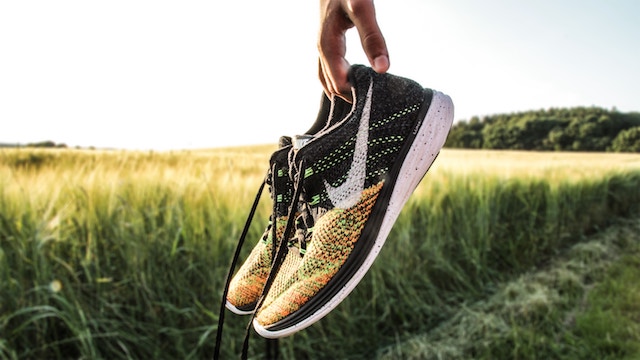Whether you’re a self-identified runner or simply want to start running to get some more cardio in your life, there are several ways to improve this exercise that everyone can benefit from. Although running is one of the easiest activities for training (only need a pair of shoes!), it is also one of the most injury-prone. In fact, some studies have found that up to 79% of runners get injured at least once a year! Before you let the stats convince you to write off this powerful cardio from your routine, there are some basic, essential tips that everyone should know that can help prevent many injuries from running.
Spend Money On Quality Running Shoes

We confess, the thought of dropping over 100 bucks on a pair of shoes can be painful. Nevertheless, it’s still nowhere near as painful as shin splints or stress fractures caused by wearing cheap shoes without proper support. Investing in shoes that are right for your feet is the most important first step to ensure you are running safely. What’s more, the price is well worth it, as shoes can sufficiently last you from 300-400 miles!
Don’t Skip A Warm Up

Yes, even running needs a warm up! It’s essential to get the blood flowing to your muscles before you hit a long run (or sprints) to prevent any muscle pulls. This means you should do some light jogging or dynamic stretches like leg swings to get your body properly warmed up. On the flip side, you should not do “static” stretches, as these can actually cause injuries when done before a workout.
Fuel Up Properly Before Running

It’s important to eat some energy-laden snacks before running. Aim for foods that have complex carbohydrates and a little protein, so that the energy is released throughout your run. The best time to eat is 1-2 hours beforehand, so that your body also has some time to digest and you don’t feel nauseous or heavy on your run.
Avoid Striking The Ground Heels First

Running by hitting “heels first” is the leading cause of running injuries. This form puts excessive pressure and strain on joints and your ankle, which overtime can lead to injuries. The best landing is either the front of middle part of the foot. To better achieve this form, try to lean your body slightly forward with your back straight as you run. This should allow for you to both run faster and get proper footing.
Photos: Unsplash, Freepik
